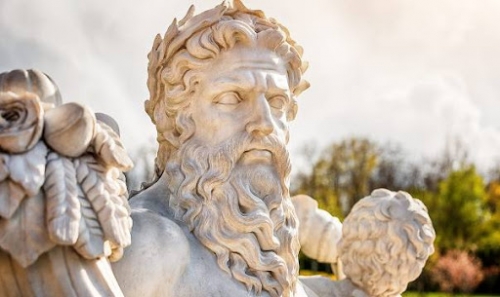
L'esprit traditionnel dans la mythologie grecque
Álex Capua
Ex : https://animasmundi.wordpress.com/2021/04/16/el-espiritu-...
Pour comprendre l'esprit traditionnel, nous devons garder en tête un axiome irréfutable relatif au ‘’Principe des deux natures’’: il existe un ordre physique et un ordre métaphysique. Nous appelons ordre physique le monde tangible, visible (par les cinq sens), le devenir qui entraîne l'homme dans un monde sans direction et sans sens. Nous faisons référence au monde métaphysique lorsque nous parlons du monde invisible et, au-delà de celui-ci, de la sphère immatérielle.
Un exemple qui illustre ce que nous avons décrit dans les lignes précédentes se trouve dans la civilisation archaïque minoenne: le roi souverain Minos servait de pont, c'est-à-dire qu'il agissait comme un bâtisseur entre les deux mondes (physique-métaphysique) et exerçait son pouvoir sur les deux, en tant que roi et prêtre par la volonté et la protection de Poséidon et, à son tour, il était le fils de Zeus. De cette façon, les lois divines étaient promulguées de manière exacte, juste et équitable et appliquées dans le royaume, répondant à la vérité, puisque Minos lui-même parlait au nom non pas de sa propre personne (mortelle et éphémère) mais de l'intégrité entière d'une personne complète qui savait parfaitement comment combiner les deux mondes. Pour cette raison, le sang d'une progéniture procédant du divin (Zeus) et d'une mortelle (Europa) était ‘’récapitulatoire’’. Selon l'émanationnisme, il héritait de sa mère l'Atman, de Zeus la lignée divine, autrement dit, le roi souverain Minos avait une descendance non seulement de sang mais d'esprit. Si cette ascendance spirituelle et cette noblesse étaient perdues, elles devenaient des termes vides, un pont qui ne permettrait pas de se connecter aux deux mondes. Cette base provenait de la Tradition occulte qui mettait son poids et sa force dans le maintien de la lignée ou de la succession des Rois sacrés, formant ainsi un axe de lumière pérenne et d'éternité dans le temps.
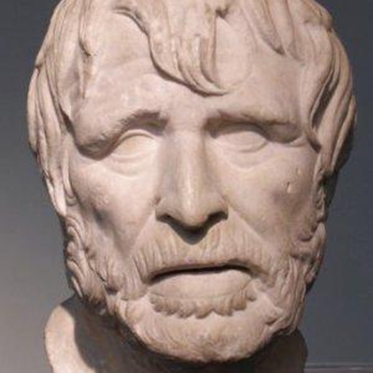
Après la rupture avec la Tradition et avec ce pont sacré et, au fur et à mesure que des mortels sans lignée divine se succédaient dans la fonction de roi souverain, ils ont commencé à former une politique de tyrans, de despotes et d'entourages qui abusaient non seulement du pouvoir, mais aussi de la distorsion des lois divines et de la rupture avec une tradition sacrée. On y explique, par exemple, le long processus de décadence de l'homme, dû à cette fracture avec les dieux, brillamment reflété dans les quatre âges. Précisément, Hésiode détaille le processus de chute par lequel passe l'homme de l'âge d'or à l'âge de fer, un cycle descendant par lequel l'homme ferait disparaître les forces subtiles ou nouménales de son monde physique. Cependant, Hésiode met en évidence les cycles dits héroïques où les castes de valeureux guerriers (Achille, Agamemnon, Héraklès, Thésée, entre autres) surmontent leur simple condition de mortel pour se connecter au Transcendant. Ainsi, par exemple, dans le mythe d'Héraclès, avec ses douze travaux, il finit par équilibrer son moi inférieur avec le monde céleste.
D'autre part, la Tradition mentionne également le premier Principe ou Élément, celui du feu, comme une composante de l'univers, cachée et invisible mais présente dans la nature qui nous entoure, comme une gaine lumineuse qui nous enveloppe. Cet agent invisible est appelé Agni et apparaît déjà chez les anciens Rishis de l'Inde, c'est-à-dire chez ces sages de l'antiquité védique qui vénéraient cet élément en accomplissant des rituels très solennels pour leurs guerriers. Héraclite, par exemple, a exprimé que : "Le feu est l'élément générateur et de ses transformations, qu'il soit raréfié ou condensé, naissent toutes choses (...)".

Dans la mythologie, Achille est le héros qui hésite entre une vie tranquille, longue et familiale ou une vie immortelle, mais qui choisit finalement de perdre sa vie sur le champ de bataille avant de l'avoir vécue pleinement et de se coucher sur son lit de mort.
Achille est le fils d'un mortel, Pelée (un descendant de Zeus), et d'une néréide, Thétis, nymphe de la mer. Thétis ne voulait pas que ses enfants soient mortels comme leur père. Pour ce faire, elle soumet le petit Achille à un rituel impliquant l'action du feu afin de purifier la composante mortelle qu'Achille a héritée de son père Pelée. Mais Pelée a réussi à le tirer des flammes à temps, bien que le talon droit du garçon ait été endommagé par le feu. Plus tard, le centaure Chiron réparera les dommages causés par le rituel de Thétis en remplaçant l'os brûlé par celui d'un géant célèbre pour sa rapidité, qualité qui lui sera reconnue bien plus tard, car Achille sera connu comme "le pied léger". Il semble qu'Achille avait le don de courir à une vitesse exceptionnelle, mais avec son talon comme seul point vulnérable. Une autre version raconte que Thétis plongea Achille dans les eaux magiques de la rivière Styx, qui avaient la propriété de le rendre invulnérable, mais immergea tout le corps sauf le talon droit. Les deux versions prennent l'eau ou le feu comme éléments purificateurs. Le feu, lorsqu'il se condense, se vaporise, et cette vapeur prend consistance et devient de l'eau qui retourne à la terre.
Il est clair que l'homme (quelle que soit la civilisation consultée), aux temps de l'Age d'Or, avait bénéficié d'une connexion instinctive avec les forces intimes et cachées de la nature, ainsi qu'avec les énergies cosmiques, qu'il percevait directement dans la vie des éléments (feu, eau, air, terre), ou par une communion immédiate et directe avec le principe qui est à l'origine des choses. Pendant l'âge d'or, nous mettons en évidence la race aryenne (descendants directs de la branche atlante) qui s'était installée dans les chaînes de montagnes de l'Himalaya. Cette race a migré en formant les peuples indo-européens qui se sont répandus en Irlande, en Angleterre, dans le nord de la France, en Scandinavie ; tandis qu'au sud, ils ont donné naissance aux Aryens de l'Inde, en plus des Sarmates, des Germains, des Italiens et, bien sûr, du peuple grec Dorien. En tant qu'idéologie principale, les peuples indo-européens ont transmis les mystères et les hautes doctrines ésotériques avec lesquels la pensée religieuse indo-européenne allait commencer à évoluer, cet esprit glorieux que Hans Friedrich Karl Günther met en évidence dans son essai La religiosité nordique.
En suivant les directives de Günter, l'essence de la religiosité grecque de caractère indo-européen peut être résumée comme suit :
- Elle n'est pas née d'une quelconque forme de peur.
- Elle ne craint pas la mort.
- Elle ne craint pas Dieu. Son Dieu n'est pas un dieu qui punit.
- Elle ne croit pas que Dieu ait conçu le monde.
- Pour le Grec, le monde était autrefois un ordre hors du temps: les hommes et les dieux ont leur siège, leur voie et leur mission.
- Ils croient en une alternance éternelle de mondes qui naissent et disparaissent, en des "crépuscules répétés des dieux", par exemple, en des cataclysmes, des catastrophes cosmiques.
- Ils ne croient pas au jugement dernier, ni à l'avènement d'un royaume de Dieu.
- Ils n'ont pas été créés par Dieu, ni par la volonté d'un créateur.
- L'origine de l'homme, comme du Cosmos, est la manifestation du principe suprême d'émanation. (Pour plus d'informations : s’informer sur l’Emanantisme).
- Il n'est pas soumis à Dieu.
- La religiosité grecque n'est pas une servitude.
- Dieu est conçu comme la Raison suprême manifestée dans l'ordre du monde, un lien Dieu-Homme, l'essence même du monde grec, étant une rationalité commune. Ils ne doutaient pas d'une réalité supérieure qui leur était évidente.
- Les Grecs recherchaient la sagesse.

Le Grec a confiance en une communauté qui comprend les hommes et les dieux, la Polis d'Athènes. Les dieux, comme les hommes, doivent trouver l'origine de leur existence dans la manifestation (par émanation) du Principe suprême. Des héros comme Thésée (roi sacré d'Athènes) et Ulysse (roi sacré d'Ithaque) représentent le guerrier spirituel, qui restaure, équilibre et harmonise le microcosme en leur sein, faisant ainsi partie du monde suprasensible du macrocosme. L'enseignement des deux héros consiste à dépasser toute sorte de barrière qui fait obstacle au voyage initiatique qui mène à la Grande Libération et à revenir à sa genèse : inconditionnée, éternelle, divine ?
L'union des dieux autour d'une cité à des moments critiques devait répondre à l'union des hommes, une union dans laquelle la force et l'efficacité symbolique s'exprimaient dans des moments tels que les Panathénées. Tant les Panathénées à Athènes que les Hyacinthes à Sparte, pour donner l'exemple des fêtes les plus fastueuses de deux cités helléniques de référence, sont le moyen de renouveler le pacte qui unit la cité à ses dieux et qui garantissait l'ordre et la prospérité.
Les Grecs honoraient une divinité avec respect, politesse, ils priaient debout, les yeux dirigés vers le ciel, les bras tendus: "A Pallas Athéna, illustre déesse, je commence à chanter, l'œil de hibou, riche en industries, que possède un cœur indomptable, vénérable jeune fille, que protège la cité, vaillante, Tritogenia, que l'industrieux Zeus a seule engendrée sur sa tête sainte, d'armes guerrières dotées, dorées, resplendissantes" (28ème Hymne homérique, c. s. VII B.C).
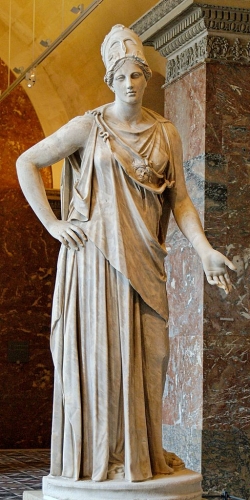
La religiosité grecque, de base indo-européenne, est la religiosité de notre monde et l'une de ses graines les plus caractéristiques est qu'ils ne connaissaient pas le sentiment de péché, ils ne se sentaient pas victimes, pour eux il n'y avait ni peur ni souffrance, ni mortification pour s'élever devant Dieu.
Curieusement, au sein de la chaîne indo-européenne qui s'est établie au Tibet, on trouve les Rishis (sages de l'antiquité védique), qui ont réussi à préserver et à transmettre une partie de leurs pouvoirs spirituels originels à travers une discipline qu'ils ont appelée "yoga", dont le fondement est d'unir l'esprit à la divinité par la pratique de la méditation et de l'ascèse spirituelle. Plus tard, les brahmanes furent les héritiers des Rishis et avec Krishna, chef et ascète de l'Himalaya, ils créèrent et innovèrent leur religion, Brahma étant le Dieu de l'univers, et Vishnu le "Verbe", deuxième personne de la divinité et sa manifestation invisible.
Avec le passage des âges ou périodes suivants, l'homme perdrait les capacités et facultés de l'âge d'or, comme, par exemple, le contact direct avec les puissances supérieures. Cette pensée élevée et transcendante des brahmanes, abritée et isolée dans leurs lointains ermitages de l'Himalaya, s'éloignait de plus en plus du monde du devenir et des plaisirs terrestres. Ainsi, l'homme a abandonné cette voie rigoureuse, stricte et ascétique, et il y a donc eu une séparation entre l'Homme et Dieu.

Dans la Grèce antique, cependant, ils ont réussi à canaliser les souvenirs de cet âge d'or, et il est curieux qu'un personnage ait surgi pour renouer avec ces puissances supérieures: Orphée. Son nom signifie "celui qui guérit par la lumière". Orphée a réveillé le sens de la divinité avec sa lyre à sept cordes qu'il a lui-même sculptée et qui a ensuite été portée par Apollon, ce qui symbolise le fait de savoir vibrer dans les sept notes fondamentales de l'univers, qui correspondent aux sept planètes sacrées traditionnelles et qui ont également une analogie avec les sept chakras principaux. La religion orphique se manifeste progressivement au 6e siècle avant J.-C. et Orphée en est le prophète.
La grande vertu d'Orphée, d'origine thrace, était d'entretenir une relation particulière, intime et directe avec la nature. Grâce à sa subtilité, Orphée a pu capter l'essence que d'autres ne pouvaient ou ne savaient pas capturer. Ainsi, Orphée apparaît comme le médiateur entre la nature et l'homme, une sorte d'interprète du langage merveilleux des choses au langage ordonné des mots et de la musique qui est en relation directe avec l'univers. De cette façon, elle devait transcender et dépasser la médiocrité de la vie humaine et son transit pauvre et éphémère dans le monde. Sans doute Orphée avait-il le don de divination, puisqu'il a lui-même institué les Mystères de Dionysos, version orphique, et répandu son culte. Selon les Orphiques, Dionysos, qui représente le "moi" cosmique, a été détruit et mis en pièces par les Titans, mais grâce à Athéna, il a été recomposé car elle lui a redonné vie et l'a offert à Zeus. Zeus fulmina contre les Titans ; les frappa de sa foudre et, de leurs cendres, qui tombèrent sur la terre naquit l'humanité qui avait transgressé les lois divines et qui devait se racheter. L'humanité avait d'une part cette part titanesque et d'autre part une part divine, représentée par Dionysos. L'homme, en effet, possède en lui le feu latent (Agni) qu'il devait allumer, telle une étincelle, et vivre une vie spirituelle en lien avec les dieux. Ulysse, Héraklès, Thésée, entre autres héros, ont atteint ce degré de connexion divine, grâce à la réalisation de certains travaux ésotériques qu'ils ont dû accomplir sur le plan terrestre pour élever leur âme, passant de cette manière symbolique de l'homme terrestre Dionysos à l'homme divin Dionysos, c'est-à-dire qu'il y a une transmutation de l'être terrestre à l'être spirituel. C'est pourquoi Orphée est également lié à une société de guerriers, avec leurs rites d'initiation, comme en témoignent les peuples indo-européens.
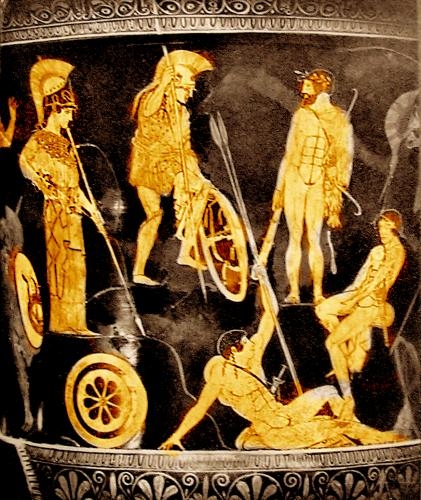
Chaque héros qui entrait en contact avec Orphée savait qu'il avait la possibilité d'acquérir des capacités surhumaines. Orphée accompagne Jason et les Argonautes dans leur quête de la Toison d'or. Dans cette histoire, nous pouvons déjà voir qu'Orphée escorte ces héros vers le monde du divin, leur montrant le chemin de la libération des âmes et de leur ascension finale, après les rites pertinents de purification et d'initiation et, enfin, les conduisant à la recherche de la sagesse.
De même, le mythe de la descente de Dionysos dans l'Hadès pour sauver sa mère Sémélé est étroitement lié, sur le plan symbolique, à l'histoire de la descente d'Orphée pour retrouver sa femme Eurydice. Le mythe lui-même a été développé sous la vision orphique comme un paradigme mythique de la libération de l'âme et de la bénédiction que Dionysos lui-même a pu accorder à ses dévots dans l'Hadès.
Ainsi, dans l'orphisme, Dionysos est le fils de Zeus et de Perséphone et a la capacité d'intercéder auprès d'elle pour que ses initiés reçoivent un destin heureux dans l'autre monde.
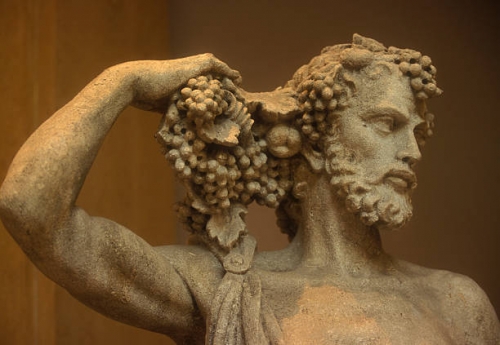
En synthèse, les différentes religions ésotériques exposées dans les paragraphes précédents avaient pour objectif fondamental d'exposer les principes des lois naturelles du cosmos, la feuille de route ésotérique que l'homme devait suivre pour atteindre l'éveil de la divinité, jusqu'à atteindre l'ascèse mystique. Par l'intermédiaire des fondateurs de leurs religions, cet ascétisme pouvait être atteint par un contact direct.
Il faut noter que, malgré la pluralité des dieux et des prophètes, ils partent tous de la même source, puisqu'il n'y avait pas tant de vérités différentes, mais une seule vérité vue par différents prophètes et une pluralité de dieux ; la diversité des dieux n'est pas contradictoire avec l'idée d'unité du divin.
Cela nous fait comprendre que, grâce à une base ésotérique qui se manifeste sans en altérer les principes, l'évolution d'un peuple est également en accord avec elle.
Les religions ésotériques se caractérisaient par leur spiritualité supérieure, laissant de côté le païen. De ce point de vue, elles sont considérées comme des religions de salut. À Éleusis, ils présentaient une série de cérémonies et de représentations dramatiques dans lesquelles Déméter jouait un rôle fondamental, tandis que sa fille Perséphone représentait un témoin muet. Les fidèles étaient captivés et abstraits par la magie de l'environnement et sa musicalité, qui réveillait les recoins invisibles et insondables des initiés, où ils reconnaissaient en Perséphone le symbole de leur âme immortelle. Déméter accordait deux dons: le blé, source de vie, et les mystères, promesse d'une vie meilleure, au-delà du plan terrestre.

À Delphes, Dionysos était vénéré dans un culte extatique où l'initié ressentait une mutation intérieure de la conscience qui changeait radicalement sa perception du monde et de lui-même. Par une transe, il s'est laissé posséder par l'esprit de Dionysos, une énergie plus puissante et infinie. Il ne s'agissait pas de perdre conscience, mais de laisser parler la folie originelle et sacrée qui est en soi. Très probablement, et suite aux tragédies des classiques, les initiés ont perdu la notion du temps et ont soustrait tout sens lié à la vue, l'ouïe et la parole. La grande étape de la libération de l'âme serait sûrement le Mont Parnasse, qu'ils verraient comme un reflet du cosmos, et l'initié se sentirait relié à lui par son âme. En perdant cette conception de l'espace, vous n'auriez pas non plus la conception du temps, car le but ultime était d'être le phénomène de la nature qui est sur le point de naître en vous. Chaque geste, chaque danse, chaque action serait parfaite. Il n'y avait pas de marge d'erreur, il n'y avait pas de plan ou d'intention préméditée. Dionysos représentait dans cet instant infini l'action pure dans l'éternel présent. Dans Les Bacchantes d'Euripide, il s'exprime (73-151) :
"Heureux l'initié béat aux mystères des dieux qui consacre sa vie et offre son âme comme compagne à la tante du dieu, dansant sur les montagnes comme les Bacchantes dans les saintes purifications (...) Le lait coule de la terre, le vin coule, le nectar des abeilles coule. On respire un arôme semblable à l'encens de Syrie lorsque Bacchus élève haut dans les airs la flamme rouge de la torche de pin avec son feu, laissant dans l'air ses boucles délicates et avec des danses et des hurlements il fait bouger les femmes en délire qui rugissent avec des cris d'évohé".
Grâce à l'état de délire et de possession divine, les dévots pouvaient réaliser toutes sortes de prodiges dans leurs danses et chants dans la montagne, entre les rites de chasse et de mort d'un animal, ainsi que d'autres "miracles" dionysiaques, liés aux domaines du dieu (la végétation, la vigne...).

En conclusion, comme le nom de Dionysos n'a pas de racine indo-européenne, il relève d’une influence orientale. Certains auteurs relient le dieu à l'Inde, bien que la ligne continue des cultes archaïques, qui reliait directement la Méditerranée à l'Inde par le Moyen-Orient et la Perse, ait été perdue pour une bonne part. Sa transcription indienne serait Shiva. Shiva correspondrait au principe destructeur qui conformerait la trinité hindoue, Brahma étant le principe créateur et Vishnu, le principe conservateur. Shiva, comme Dionysos, représenterait non seulement le principe destructeur, mais symboliserait également le phallus, en tant qu'expression de la fécondité. Il est également représenté comme le seigneur de la danse cosmique. Plus tard, les peuples aryens lui ont donné une place dans leurs rituels et l'ont associé au protecteur de la nature et des animaux sous le nom de Pashupati. On reconnaît à Shiva les traits suivants, très semblables à ceux de Dionysos: la vigne, la fertilité de la terre, le seigneur des animaux, l'invocation de la danse ou du théâtre, liée à des forces incontrôlées, oscillant entre la vie (festins, orgies nocturnes) et la mort. Progressivement, les traces du shivaïsme ont été intégrées au brahmanisme védique, le transformant profondément, d'où la difficulté de le rattacher à ses origines. Il en va de même pour Dionysos, dont l'origine est ambiguë et dont le culte est resté sous-jacent malgré la vague d'invasions et les guerres qui en découlaient. Quoi qu'il en soit, si nous devions penser que le Dionysos archaïque a été la même divinité que le Shiva de la religion védique, nous trouverions des divinités "identiques" dans différentes religions, et cette possibilité est également très valable pour relier les religions occidentales et orientales.
Bibliographie
Burkert, W. Cultos mistéricos antiguos. Ed. Trotta.
Capelle, W. Historia de la Filosofía Griega. Ed. Gredos
Bernabé, A. Orfeo y la tradición órfica. Akal Universitaria. Serie Religiones y mitos.
Günter, H. Religiosidad nórdica. Ed. EAS.
Montes, A. Repensar a Heráclito. Ed. Trotta.
Grimal, P. Diccionario de mitología griega y romana. Ed. Paidos.
Bhagavad Gita: el canto del Señor. Círculo de Lectores.
Liens intéressants :
El Emanacionismo
Dionisos y Shiva
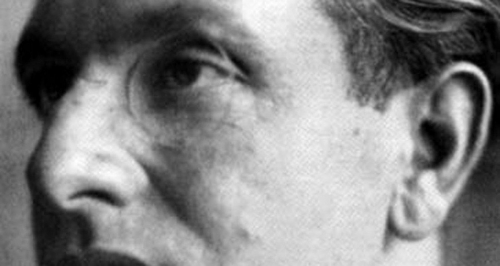



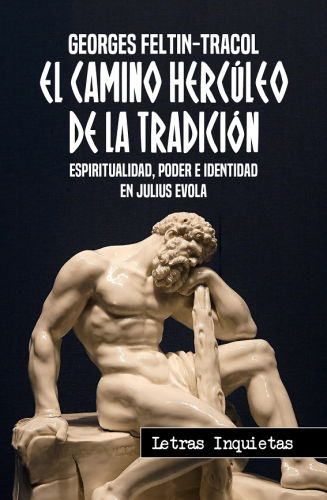

 del.icio.us
del.icio.us
 Digg
Digg
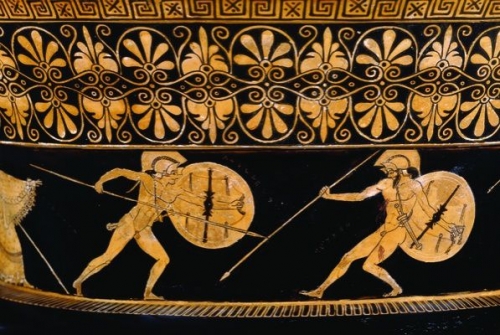
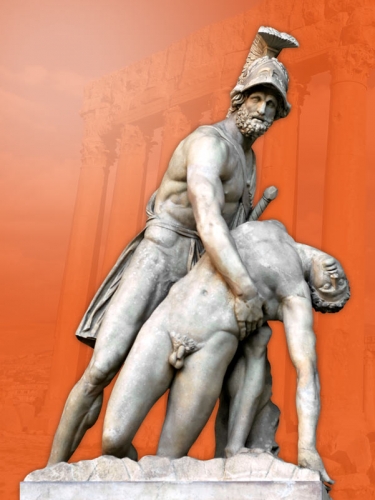
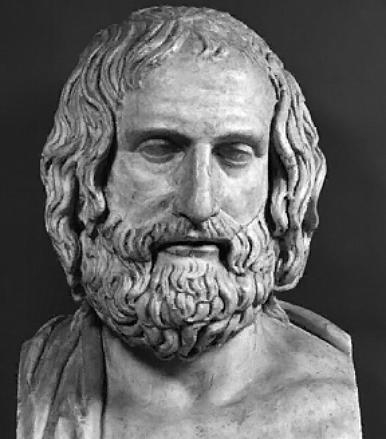
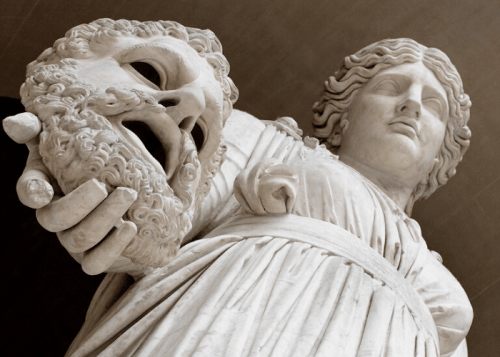
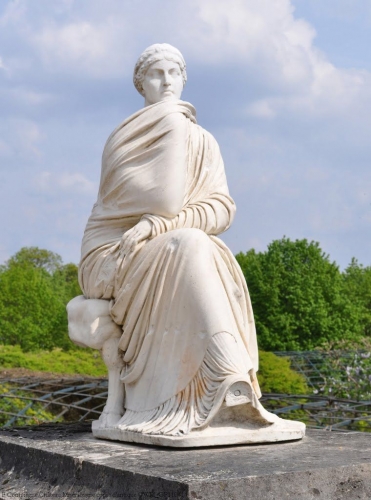
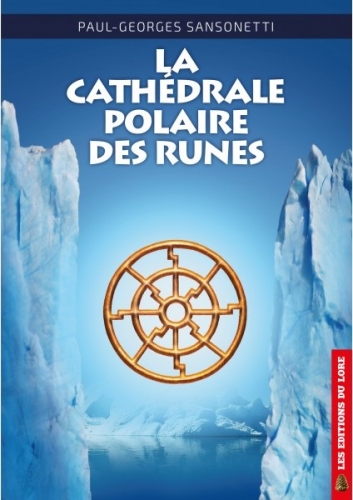


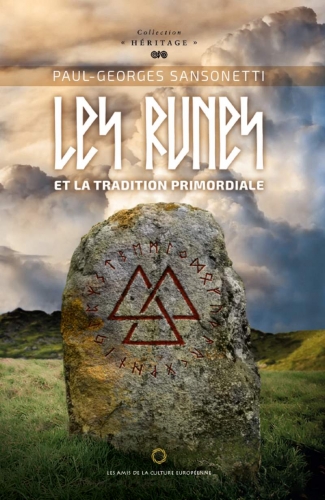
 Vouloir limiter l’écriture des anciens Germains au simple rôle linguistique montrerait une méconnaissance totale de ce que leur tracé comporte réellement. Car ladite écriture, composée de vingt-quatre signes, s’impose comme un système prodigieusement élaboré rassemblant les notions essentielles constitutives de l’identité ethnoculturelle européenne. Mais cela signifie aussi que le savoir émanant des runes se relie au maître thème du légendaire de notre continent et qui, jadis évoqué par René Guénon et Julius Evola, se nomme « Centre suprême ». Thème corrélatif à la mystérieuse « Tradition primordiale » traversant toutes les religiosités qu’instituèrent nos ancêtres et englobant l’univers du symbolisme et des mythes. Le « Centre suprême » est à la « Tradition primordiale » ce que le pyramidion représente pour une pyramide : le sommet conférant à ce monument sa forme générale et ses proportions.
Vouloir limiter l’écriture des anciens Germains au simple rôle linguistique montrerait une méconnaissance totale de ce que leur tracé comporte réellement. Car ladite écriture, composée de vingt-quatre signes, s’impose comme un système prodigieusement élaboré rassemblant les notions essentielles constitutives de l’identité ethnoculturelle européenne. Mais cela signifie aussi que le savoir émanant des runes se relie au maître thème du légendaire de notre continent et qui, jadis évoqué par René Guénon et Julius Evola, se nomme « Centre suprême ». Thème corrélatif à la mystérieuse « Tradition primordiale » traversant toutes les religiosités qu’instituèrent nos ancêtres et englobant l’univers du symbolisme et des mythes. Le « Centre suprême » est à la « Tradition primordiale » ce que le pyramidion représente pour une pyramide : le sommet conférant à ce monument sa forme générale et ses proportions.
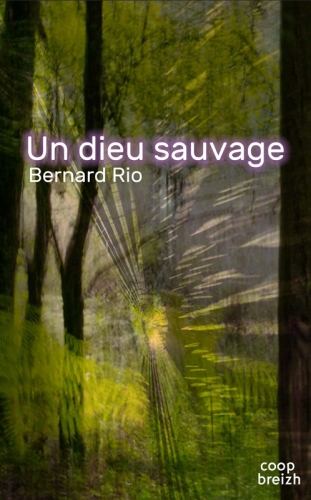
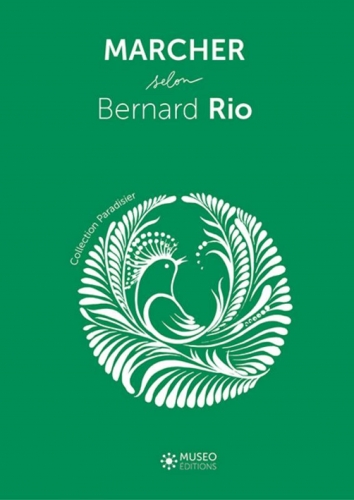
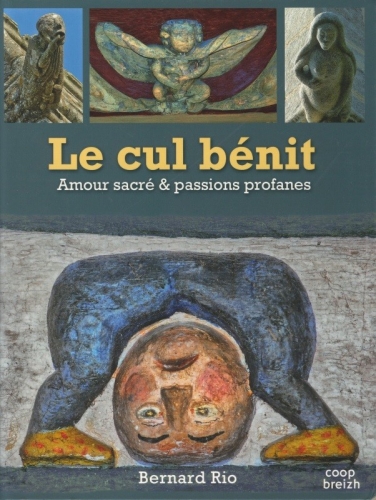












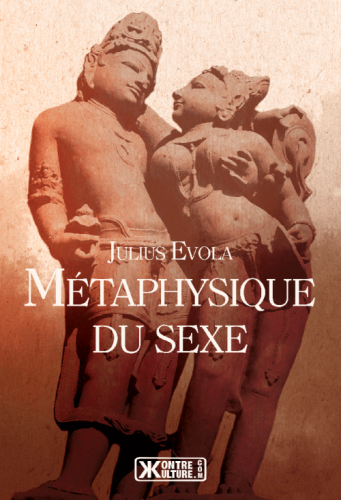
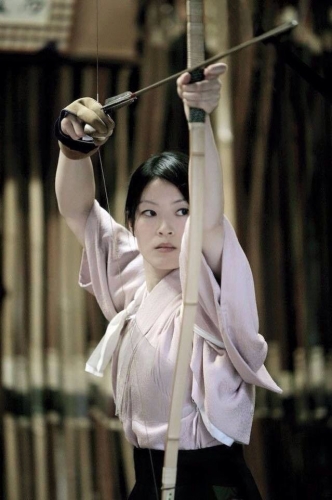
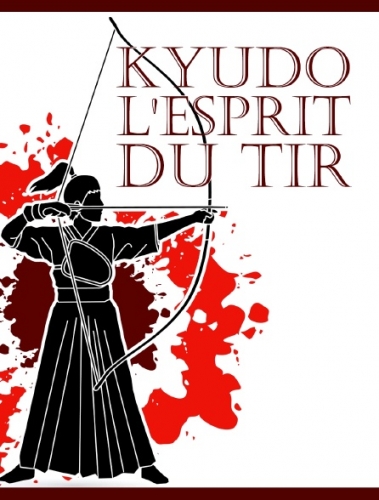 Au Japon, les arts martiaux ont des origines très anciennes et sont profondément ancrés dans la culture traditionnelle du pays. Parmi les disciplines qui, de ce point de vue, sont les plus éloignées dans le temps, il y a certainement le tir à l'arc, qui se pratiquait à pied ou à cheval. Dans ce dernier cas, on parle de yabusame alors que dans le premier cas, on parle de kyujutsu. C’est donc l'ancêtre du Kyudo, discipline plus moderne.
Au Japon, les arts martiaux ont des origines très anciennes et sont profondément ancrés dans la culture traditionnelle du pays. Parmi les disciplines qui, de ce point de vue, sont les plus éloignées dans le temps, il y a certainement le tir à l'arc, qui se pratiquait à pied ou à cheval. Dans ce dernier cas, on parle de yabusame alors que dans le premier cas, on parle de kyujutsu. C’est donc l'ancêtre du Kyudo, discipline plus moderne.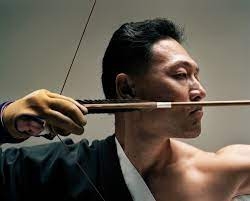 Deux mots sur les instruments et la pratique du Kyudo: tout d'abord l'arc (yumi). Il est grand (environ 2 mètres) et il est fait d'éléments en bois et en bambou, ce qui le rend élastique et résistant à la fois. Les flèches étaient et sont de formes et de matériaux différents selon leur utilisation et leur lieu de fabrication. Quant aux compétitions, on lance généralement une cible à 28 ou 60 mètres et le vainqueur est décrété non seulement en fonction du nombre de flèches qui ont atteint la cible (efficacité du tir) mais aussi en fonction de l'exécution correcte des mouvements et des positions de base. En effet, le but du Kyudo n'est pas seulement de participer à des compétitions, mais de cultiver l'esprit et le corps comme une méthode d'amélioration de soi par la recherche de la perfection du tir combinée à la pureté de l'esprit et à l'harmonie intérieure et extérieure.
Deux mots sur les instruments et la pratique du Kyudo: tout d'abord l'arc (yumi). Il est grand (environ 2 mètres) et il est fait d'éléments en bois et en bambou, ce qui le rend élastique et résistant à la fois. Les flèches étaient et sont de formes et de matériaux différents selon leur utilisation et leur lieu de fabrication. Quant aux compétitions, on lance généralement une cible à 28 ou 60 mètres et le vainqueur est décrété non seulement en fonction du nombre de flèches qui ont atteint la cible (efficacité du tir) mais aussi en fonction de l'exécution correcte des mouvements et des positions de base. En effet, le but du Kyudo n'est pas seulement de participer à des compétitions, mais de cultiver l'esprit et le corps comme une méthode d'amélioration de soi par la recherche de la perfection du tir combinée à la pureté de l'esprit et à l'harmonie intérieure et extérieure.
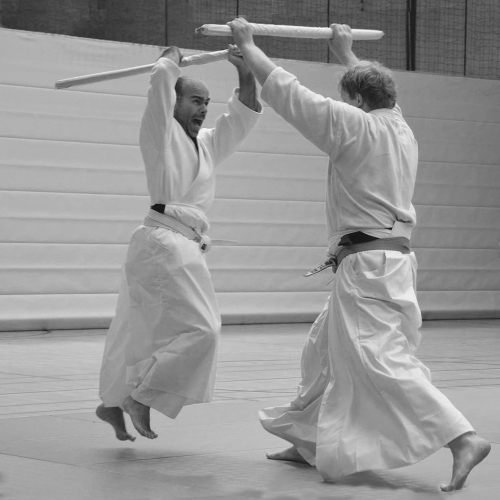
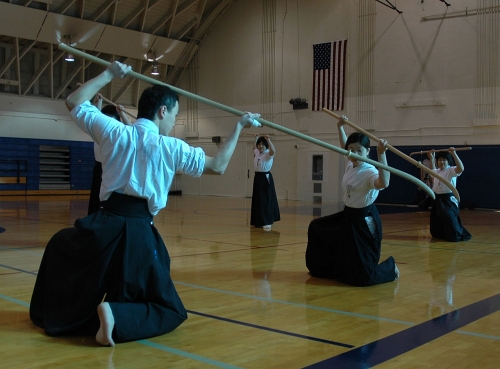


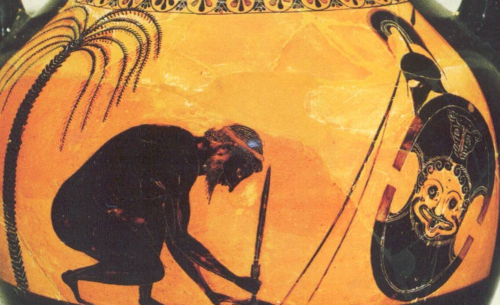
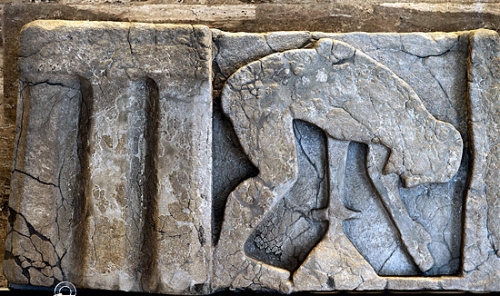
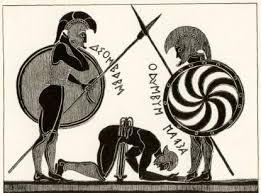
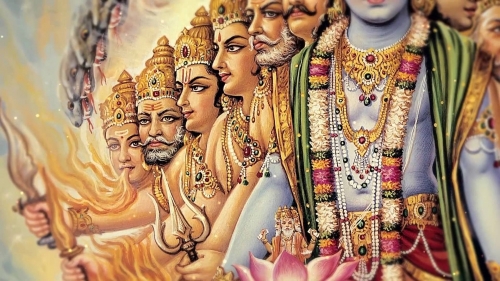
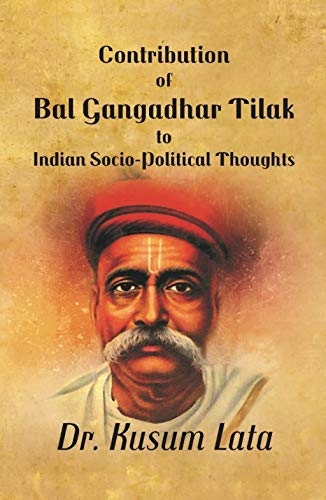 "Ces caractéristiques, il est inutile de les répéter maintenant, ne sont propres qu'à l'aube aux temps passés dans la patrie polaire des origines. En particulier, la dernière ou la cinquième de ces caractéristiques aurorales ne se retrouve que dans les terres proches du pôle Nord, et non pas partout dans la région arctique. Nous pouvons donc conclure sans risque que les déesses védiques de l'aube sont, à l'origine, polaires. Mais il est urgent de dire que, si l'aube polaire dure de 45 à 60 jours, les aubes védiques ne durent que 30 parties d'un long jour. Il faut garder cette différence à l'esprit avant d'accepter la conclusion que l'aube védique est de caractère polaire. La différence n'est pas grave. Nous avons constaté que la durée des aurores dépend du pouvoir de réfraction et de réflexion de l'atmosphère, qui varie en fonction de la température de l'atmosphère et des conditions météorologiques. Il n'est cependant pas impossible que la durée de l'aube au Pôle, lorsque le climat était plus doux, ait été plus courte que nous le pensons, à l'heure actuelle, où le climat est rigoureux. Il est toutefois plus probable que l'aube décrite dans le Rig-Veda n'est pas l'aube qu'un observateur, placé précisément au pôle Nord, peut observer. Comme je l'ai souligné précédemment, le pôle Nord est un point, et si les hommes vivaient près du pôle à cette époque primordiale, ils ont pu vivre un peu au sud de ce point. Il est donc tout à fait possible d'avoir une Aurore de 30 jours qui bouge comme une roue, après la longue nuit arctique de 4 ou 5 mois. En ce qui concerne l'astronomie, la description de l'aube que nous lisons dans la littérature védique n'a rien de farfelu. Il faut aussi penser que l'aube védique s'attardait souvent longtemps à l'horizon et que les adorateurs lui demandaient de ne pas s'attarder, de peur que le Soleil ne la cherche comme on cherche un ennemi."
"Ces caractéristiques, il est inutile de les répéter maintenant, ne sont propres qu'à l'aube aux temps passés dans la patrie polaire des origines. En particulier, la dernière ou la cinquième de ces caractéristiques aurorales ne se retrouve que dans les terres proches du pôle Nord, et non pas partout dans la région arctique. Nous pouvons donc conclure sans risque que les déesses védiques de l'aube sont, à l'origine, polaires. Mais il est urgent de dire que, si l'aube polaire dure de 45 à 60 jours, les aubes védiques ne durent que 30 parties d'un long jour. Il faut garder cette différence à l'esprit avant d'accepter la conclusion que l'aube védique est de caractère polaire. La différence n'est pas grave. Nous avons constaté que la durée des aurores dépend du pouvoir de réfraction et de réflexion de l'atmosphère, qui varie en fonction de la température de l'atmosphère et des conditions météorologiques. Il n'est cependant pas impossible que la durée de l'aube au Pôle, lorsque le climat était plus doux, ait été plus courte que nous le pensons, à l'heure actuelle, où le climat est rigoureux. Il est toutefois plus probable que l'aube décrite dans le Rig-Veda n'est pas l'aube qu'un observateur, placé précisément au pôle Nord, peut observer. Comme je l'ai souligné précédemment, le pôle Nord est un point, et si les hommes vivaient près du pôle à cette époque primordiale, ils ont pu vivre un peu au sud de ce point. Il est donc tout à fait possible d'avoir une Aurore de 30 jours qui bouge comme une roue, après la longue nuit arctique de 4 ou 5 mois. En ce qui concerne l'astronomie, la description de l'aube que nous lisons dans la littérature védique n'a rien de farfelu. Il faut aussi penser que l'aube védique s'attardait souvent longtemps à l'horizon et que les adorateurs lui demandaient de ne pas s'attarder, de peur que le Soleil ne la cherche comme on cherche un ennemi."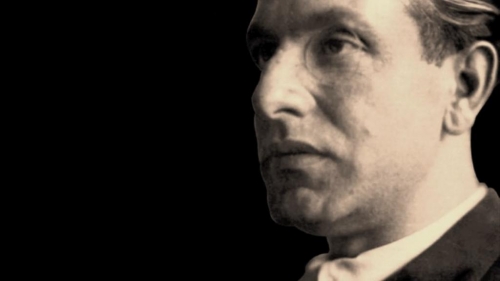
 Un élève de Donà, le jeune Michele Ricciotti, a récemment publié une monographie consacrée au philosophe, qui s'impose comme un livre important dans la littérature critique sur le sujet. Nous nous référons à "Prouver l'ego". Julius Evola et la philosophie, paru dans le catalogue de l'éditeur InSchibboleth (pour les commandes :
Un élève de Donà, le jeune Michele Ricciotti, a récemment publié une monographie consacrée au philosophe, qui s'impose comme un livre important dans la littérature critique sur le sujet. Nous nous référons à "Prouver l'ego". Julius Evola et la philosophie, paru dans le catalogue de l'éditeur InSchibboleth (pour les commandes : 
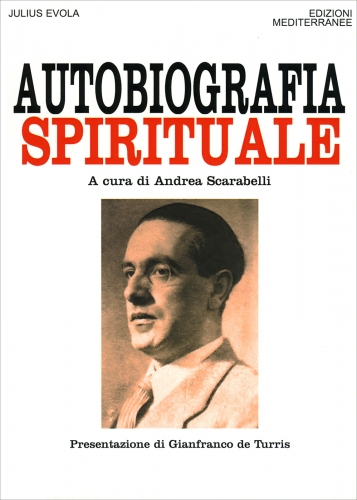
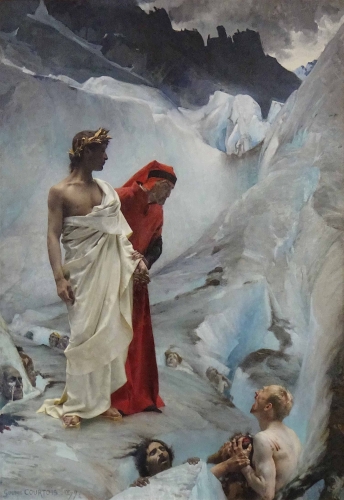
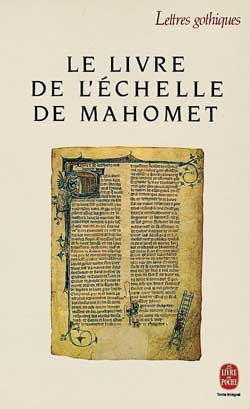 J'avoue adorer ce petit livre, amplification de quelques lignes du Coran. Mahomet y parcourt sans passion particulière un monde fabuleux, rempli d'anges, de démons, de figures incroyables. Dante l'a, consciemment ou non, repris, en le personnalisant davantage - en créant, entre le tableau théologique des trois royaumes d'après la mort et sa propre personne, un lien intime, dramatique, individualisé. C'est ce qui, en plus d'une somme théorique sur le monde spirituel, fait de son poème un chef-d'œuvre.
J'avoue adorer ce petit livre, amplification de quelques lignes du Coran. Mahomet y parcourt sans passion particulière un monde fabuleux, rempli d'anges, de démons, de figures incroyables. Dante l'a, consciemment ou non, repris, en le personnalisant davantage - en créant, entre le tableau théologique des trois royaumes d'après la mort et sa propre personne, un lien intime, dramatique, individualisé. C'est ce qui, en plus d'une somme théorique sur le monde spirituel, fait de son poème un chef-d'œuvre.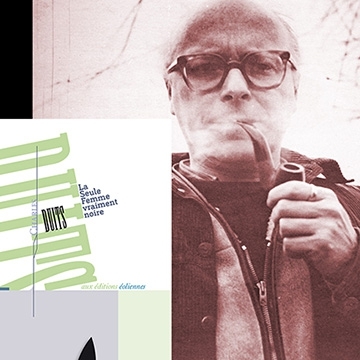 Si Tolkien avait lu Charles Duits, il ne l'eût sans doute pas aimé. Car l'auteur de La Seule Femme vraiment noire ne dit pas seulement que la beauté des femmes de chair reflète le Ciel, mais aussi que le désir charnel émane de l'amour cosmique - en est l'écho dans le corps humain. Cela peut donner une logique à l'amour courtois, qui faisait d'une femme de chair l'inspiratrice du bien, pour les chevaliers. En elle se reflétait la beauté de Dieu, et l'amour du Bien en venait spontanément!
Si Tolkien avait lu Charles Duits, il ne l'eût sans doute pas aimé. Car l'auteur de La Seule Femme vraiment noire ne dit pas seulement que la beauté des femmes de chair reflète le Ciel, mais aussi que le désir charnel émane de l'amour cosmique - en est l'écho dans le corps humain. Cela peut donner une logique à l'amour courtois, qui faisait d'une femme de chair l'inspiratrice du bien, pour les chevaliers. En elle se reflétait la beauté de Dieu, et l'amour du Bien en venait spontanément!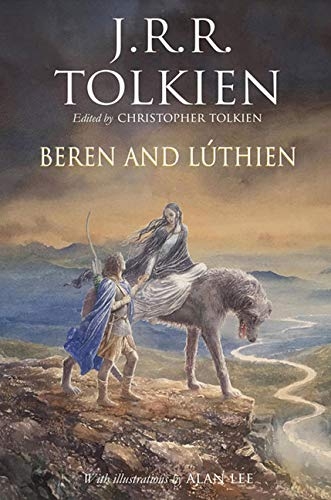 Cela dit, dans la légende de Beren et Luthien, Tolkien s'est assimilé à un mortel, et a assimilé son épouse à une immortelle. Cela ne laisse pas de rappeler Dante et Béatrice. Toutefois Tolkien est plus romanesque et pour le coup moins religieux.
Cela dit, dans la légende de Beren et Luthien, Tolkien s'est assimilé à un mortel, et a assimilé son épouse à une immortelle. Cela ne laisse pas de rappeler Dante et Béatrice. Toutefois Tolkien est plus romanesque et pour le coup moins religieux. 
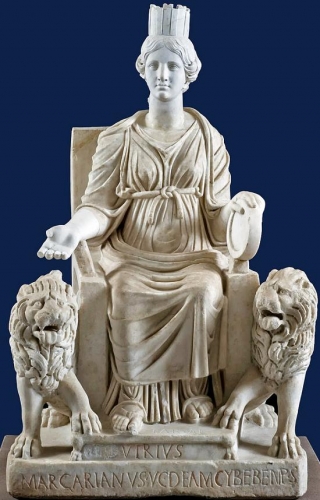


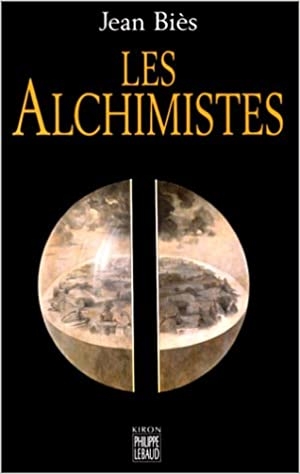 L'ouvrage est un des rares à prendre en compte tous les aspects de l'Alchimie, tant dans sa réalité historique que constitutive ou structurale. L'Alchimie est un art, un jeu, une science, une poétique et une gnose. Elle est également une médecine, magistralement illustrée, entre autre, par Paracelse, une cosmologie, fondée sur la correspondance du microcosme et du macrocosme (dont témoigne la fameuse Table d'Emeraude) et une science héraldique des « signatures ».
L'ouvrage est un des rares à prendre en compte tous les aspects de l'Alchimie, tant dans sa réalité historique que constitutive ou structurale. L'Alchimie est un art, un jeu, une science, une poétique et une gnose. Elle est également une médecine, magistralement illustrée, entre autre, par Paracelse, une cosmologie, fondée sur la correspondance du microcosme et du macrocosme (dont témoigne la fameuse Table d'Emeraude) et une science héraldique des « signatures ». 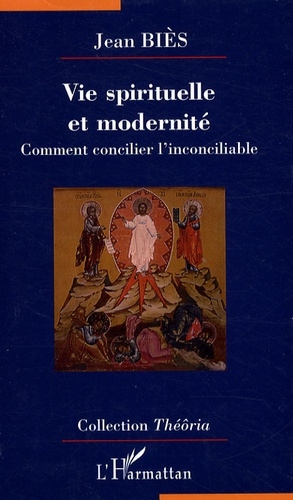 Science des qualités et des nuances, des variations et de l'interprétation, l'Alchimie, loin d'être l'ancêtre balbutiante de la Chimie telle qu'elle se précisa au dix-neuvième siècle, fut une connaissance (pour une part perdue, et pour une autre, non encore advenue) de l'interdépendance de l'expérimentateur, de la chose expérimentée et de l'expérience elle-même. Le couronnement de l'œuvre est la transfiguration de l'Adepte. L'instrument de la connaissance a pour dessein de modifier, en même temps, et de façon essentielle, la matière et l'entendement humain qui œuvre sur elle. A ce titre, les alchimistes devancent l'exigence de la phénoménologie et de l'épistémologie et l'on s'étonne, en effet, que leurs œuvres soient exclues du « corpus » des actuelles pensées prospectives. Il est vrai que l'Alchimie inquiète, que ses œuvres paraissent insaisissables et qu'elle exige de ses chercheurs comme de ses adeptes, et même de ses simples historiographes, certaines des vertus éminentes du navigateur.
Science des qualités et des nuances, des variations et de l'interprétation, l'Alchimie, loin d'être l'ancêtre balbutiante de la Chimie telle qu'elle se précisa au dix-neuvième siècle, fut une connaissance (pour une part perdue, et pour une autre, non encore advenue) de l'interdépendance de l'expérimentateur, de la chose expérimentée et de l'expérience elle-même. Le couronnement de l'œuvre est la transfiguration de l'Adepte. L'instrument de la connaissance a pour dessein de modifier, en même temps, et de façon essentielle, la matière et l'entendement humain qui œuvre sur elle. A ce titre, les alchimistes devancent l'exigence de la phénoménologie et de l'épistémologie et l'on s'étonne, en effet, que leurs œuvres soient exclues du « corpus » des actuelles pensées prospectives. Il est vrai que l'Alchimie inquiète, que ses œuvres paraissent insaisissables et qu'elle exige de ses chercheurs comme de ses adeptes, et même de ses simples historiographes, certaines des vertus éminentes du navigateur. 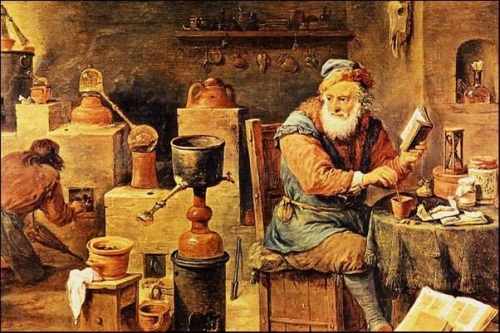


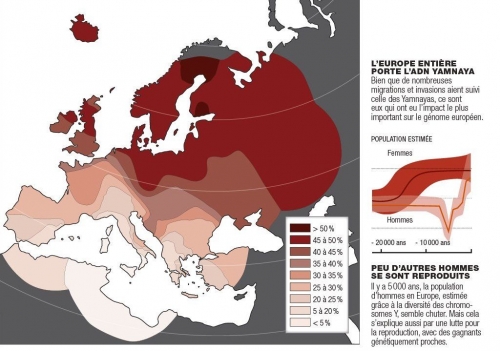
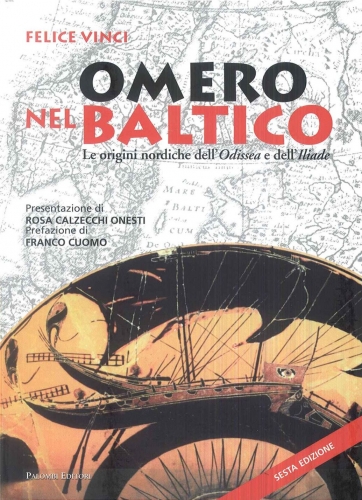
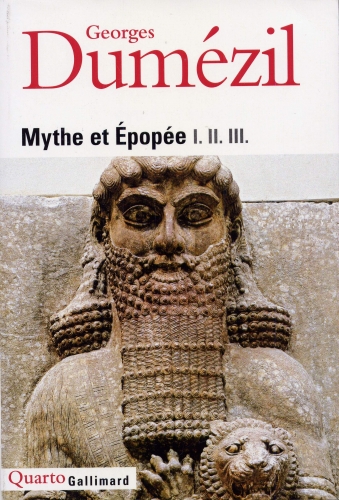
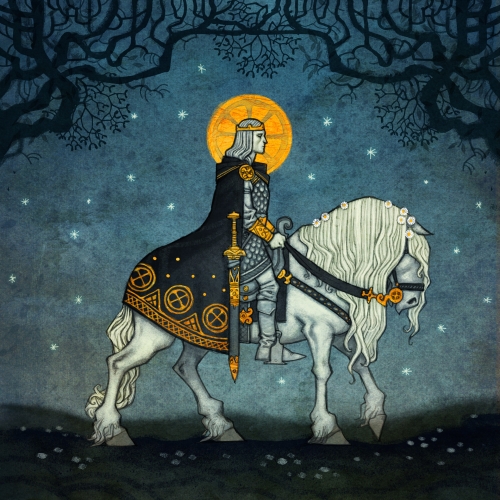
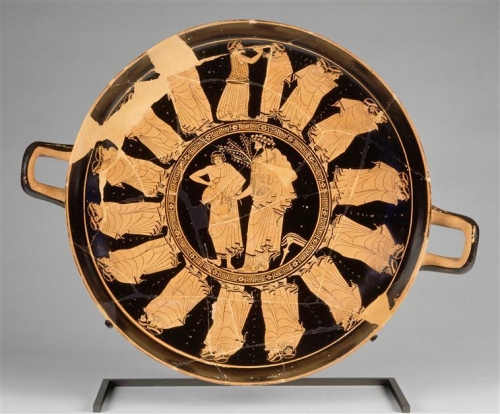
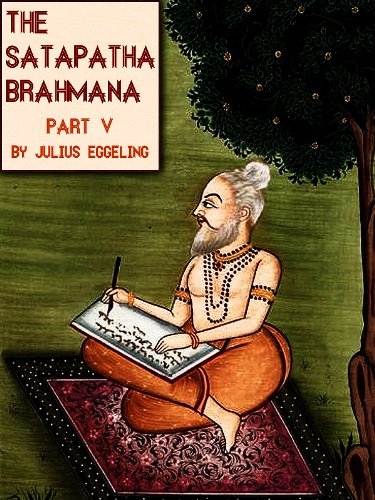 La reconnaissance de l’existence de la tradition conduit aussi à distinguer l’âge d’un texte de l’âge de son contenu. C’est ce qu’a montré Filliozat (1962 : 340) à propos des Pléiades dont le Śatapatha brāhmaṇa 2,1,2,2-3 affirme qu’elles ne se départent pas de la direction de l’est. « La position vraie de l’équinoxe vernal dans les Pléiades a eu lieu à haute date, au milieu du IVe millénaire, et il faut, pour qu’elle ait assuré aux Pléiades dans les traditions les plus répandues la première place d’entre les constellations, qu’elle ait été notée comme une découverte capitale en un temps où on ne connaissait pas encore la précession des équinoxes. » Filliozat note que ce fait confirme la datation de Dikshit et de Tilak [1979 (1903) : 17], contestée à tort par Thibaut, Whitney et Kaye. Il serait naturellement absurde de faire remonter au IVe millénaire la rédaction du Śatapatha brāhmaṇa, qui est considéré comme le texte le plus récent de sa catégorie. Il est vrai toutefois que Tilak a eu des formulations malencontreuses comme (1979 (1903) : 122) : « La Taittirīya saṃhitā doit être attribuée à la période des Pléiades (…) vers - 2.500. » Il s’agit naturellement de l’origine d’une petite part du contenu et non de la rédaction de l’ensemble du texte. Tilak n’est pas isolé dans ses conclusions : il a été précédé par Krause (1891 ; 1893 a-b), qui opérait sur de tout autres bases. Quand Kuiper (1960 : 222) suppose que les hymnes à Agni et à Uṣas du R̥gveda célèbrent « la réapparition de la lumière solaire après une période de ténèbres hivernales », il se rallie manifestement à leur hypothèse sans les citer, mais en la formulant explicitement. Bongard-Levin et Grantovskij (1981), qui citent abondamment Tilak, mais ignorent Krause, concluent (115-116) : « Il y a toute raison de soutenir que chez les ancêtres des peuples indo-européens, le cercle complet des représentations « nordiques » que nous avons examiné a pu se former seulement par des contacts directs avec des tribus du Nord, qui habitaient tout près des régions arctiques. » Leurs conclusions ne contredisent pas la théorie des Kourganes qu’ils adoptent explicitement pour des temps ultérieurs. Mais comme ils n’opèrent pas avec la notion de tradition, ils s’en tiennent à des contacts. Or que de tels contacts aient abouti à des anecdotes, comme on en trouve chez Hérodote, chez Lucrèce, chez Pline et bien d’autres, surtout après le voyage de Pytheas (fin du IVe siècle avant notre ère), est naturel. Mais comment imaginer qu’ils aient pu pénétrer aussi profondément dans la pensée des Indo-Européens et plus particulièrement des Indo-Iraniens, des Germains et des Celtes ? Leurs informateurs, qui auraient dû parcourir plus de deux mille kilomètres, ne parlaient pas l’indo-européen, ce qui rendait improbables des contacts culturels et surtout une influence de ces populations que les Indo-Européens, dont les auteurs rappellent à juste titre le développement, devaient considérer comme arriérées. Un peuple ne fonde pas sa vision du monde sur des récits de voyageurs étrangers, surtout s’il s’agit de sauvages. L’accord entre l’origine circumpolaire des Indo-Européens et la théorie des kourganes est en effet possible. Mais il faut opérer avec les notions de tradition et de chronologie de la tradition.
La reconnaissance de l’existence de la tradition conduit aussi à distinguer l’âge d’un texte de l’âge de son contenu. C’est ce qu’a montré Filliozat (1962 : 340) à propos des Pléiades dont le Śatapatha brāhmaṇa 2,1,2,2-3 affirme qu’elles ne se départent pas de la direction de l’est. « La position vraie de l’équinoxe vernal dans les Pléiades a eu lieu à haute date, au milieu du IVe millénaire, et il faut, pour qu’elle ait assuré aux Pléiades dans les traditions les plus répandues la première place d’entre les constellations, qu’elle ait été notée comme une découverte capitale en un temps où on ne connaissait pas encore la précession des équinoxes. » Filliozat note que ce fait confirme la datation de Dikshit et de Tilak [1979 (1903) : 17], contestée à tort par Thibaut, Whitney et Kaye. Il serait naturellement absurde de faire remonter au IVe millénaire la rédaction du Śatapatha brāhmaṇa, qui est considéré comme le texte le plus récent de sa catégorie. Il est vrai toutefois que Tilak a eu des formulations malencontreuses comme (1979 (1903) : 122) : « La Taittirīya saṃhitā doit être attribuée à la période des Pléiades (…) vers - 2.500. » Il s’agit naturellement de l’origine d’une petite part du contenu et non de la rédaction de l’ensemble du texte. Tilak n’est pas isolé dans ses conclusions : il a été précédé par Krause (1891 ; 1893 a-b), qui opérait sur de tout autres bases. Quand Kuiper (1960 : 222) suppose que les hymnes à Agni et à Uṣas du R̥gveda célèbrent « la réapparition de la lumière solaire après une période de ténèbres hivernales », il se rallie manifestement à leur hypothèse sans les citer, mais en la formulant explicitement. Bongard-Levin et Grantovskij (1981), qui citent abondamment Tilak, mais ignorent Krause, concluent (115-116) : « Il y a toute raison de soutenir que chez les ancêtres des peuples indo-européens, le cercle complet des représentations « nordiques » que nous avons examiné a pu se former seulement par des contacts directs avec des tribus du Nord, qui habitaient tout près des régions arctiques. » Leurs conclusions ne contredisent pas la théorie des Kourganes qu’ils adoptent explicitement pour des temps ultérieurs. Mais comme ils n’opèrent pas avec la notion de tradition, ils s’en tiennent à des contacts. Or que de tels contacts aient abouti à des anecdotes, comme on en trouve chez Hérodote, chez Lucrèce, chez Pline et bien d’autres, surtout après le voyage de Pytheas (fin du IVe siècle avant notre ère), est naturel. Mais comment imaginer qu’ils aient pu pénétrer aussi profondément dans la pensée des Indo-Européens et plus particulièrement des Indo-Iraniens, des Germains et des Celtes ? Leurs informateurs, qui auraient dû parcourir plus de deux mille kilomètres, ne parlaient pas l’indo-européen, ce qui rendait improbables des contacts culturels et surtout une influence de ces populations que les Indo-Européens, dont les auteurs rappellent à juste titre le développement, devaient considérer comme arriérées. Un peuple ne fonde pas sa vision du monde sur des récits de voyageurs étrangers, surtout s’il s’agit de sauvages. L’accord entre l’origine circumpolaire des Indo-Européens et la théorie des kourganes est en effet possible. Mais il faut opérer avec les notions de tradition et de chronologie de la tradition.
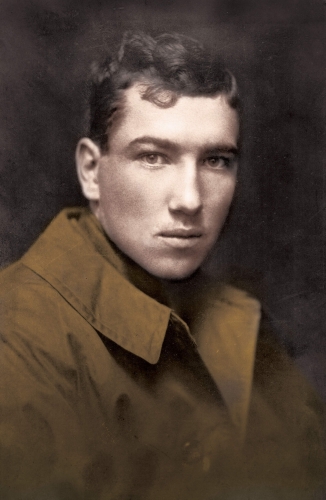
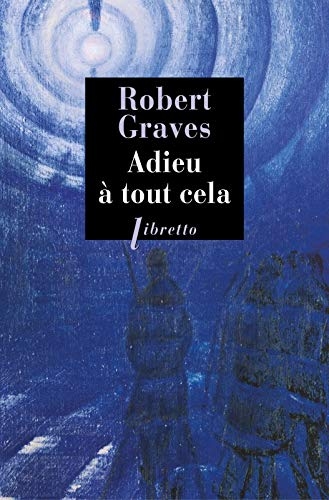 Robert GRAVES, 1895-1985, est un poète et romancier britannique, spécialiste des mythes et de l'Antiquité, il a connu le succès avec sa trilogie romanesque sur l'Empire romain, "Moi, Claude" et avec son récit " Les Mythes Grecs".
Robert GRAVES, 1895-1985, est un poète et romancier britannique, spécialiste des mythes et de l'Antiquité, il a connu le succès avec sa trilogie romanesque sur l'Empire romain, "Moi, Claude" et avec son récit " Les Mythes Grecs". 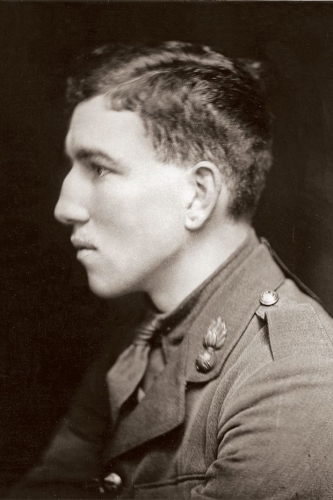
 C'est évidemment à la lumière de ces énormes traumatismes communs à toute une génération de jeunes hommes comme son ami et alter ego le poète et capitaine Siegfried SASSOON , qu'il faut comprendre comment, après la victoire alliée de 1918 et la fin de ses études à Oxford, ou il s'est lié d'amitié avec le colonel T.E LAWRENCE alors en pleine écriture des Sept Piliers et l'écrivain et poète TS ELIOT notamment, il est amené à partir pour l'Egypte et à réviser nombre de ses opinions sur l'Angleterre qu'il a connue avant la guerre. L'horreur de ses souvenirs avait suscité une telle amertume chez le jeune homme qu'il était encore que, incapable de vivre au pays, il se sépara de sa première femme ( ils avaient eu quatre enfants) et s'installa à Majorque. Dans la beauté d'un paysage à mille lieues de la boue, des rats, du froid, de la putréfaction des cadavres, du sifflement des balles et des hurlements déchirants de blessés qui mettaient souvent plusieurs jours à mourir dans le no man's land entre les tranchées adverses si proches les unes des autres, il acheva la rédaction de cette autobiographie.
C'est évidemment à la lumière de ces énormes traumatismes communs à toute une génération de jeunes hommes comme son ami et alter ego le poète et capitaine Siegfried SASSOON , qu'il faut comprendre comment, après la victoire alliée de 1918 et la fin de ses études à Oxford, ou il s'est lié d'amitié avec le colonel T.E LAWRENCE alors en pleine écriture des Sept Piliers et l'écrivain et poète TS ELIOT notamment, il est amené à partir pour l'Egypte et à réviser nombre de ses opinions sur l'Angleterre qu'il a connue avant la guerre. L'horreur de ses souvenirs avait suscité une telle amertume chez le jeune homme qu'il était encore que, incapable de vivre au pays, il se sépara de sa première femme ( ils avaient eu quatre enfants) et s'installa à Majorque. Dans la beauté d'un paysage à mille lieues de la boue, des rats, du froid, de la putréfaction des cadavres, du sifflement des balles et des hurlements déchirants de blessés qui mettaient souvent plusieurs jours à mourir dans le no man's land entre les tranchées adverses si proches les unes des autres, il acheva la rédaction de cette autobiographie. 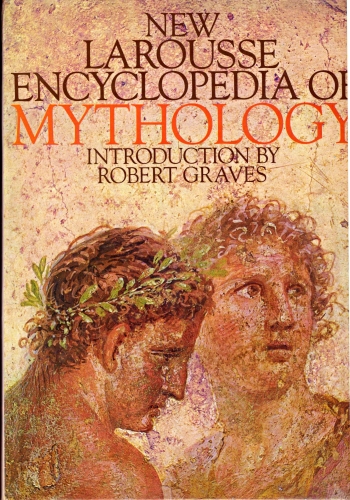
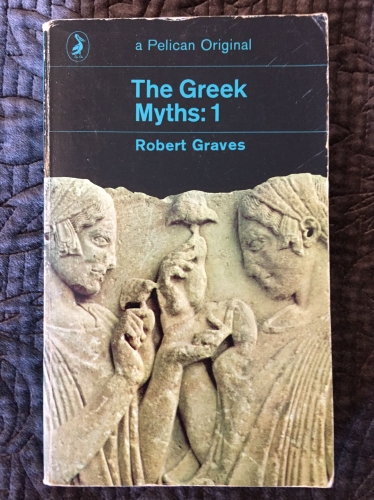
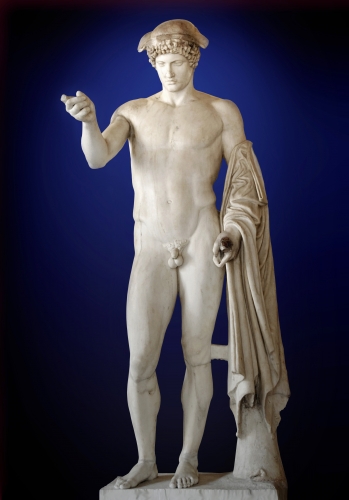
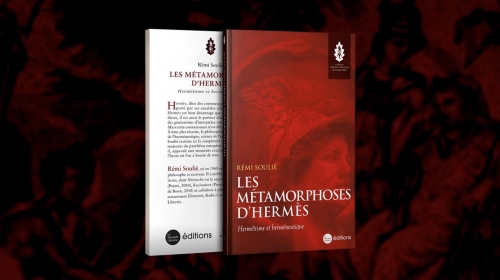

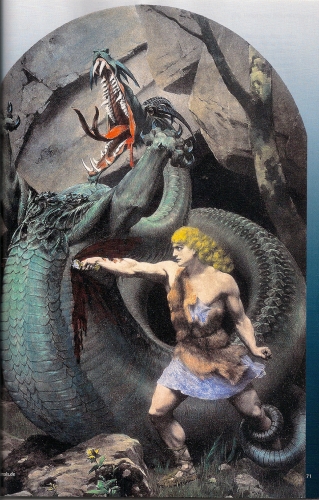

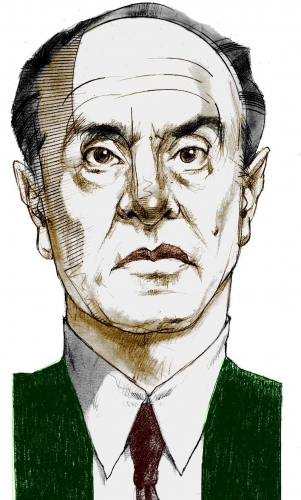
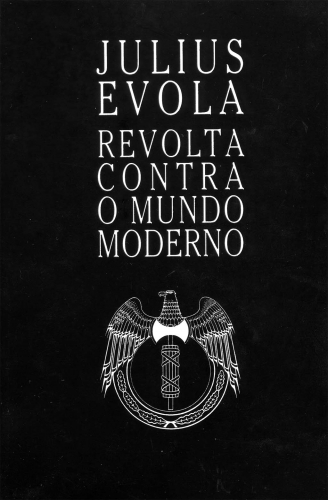
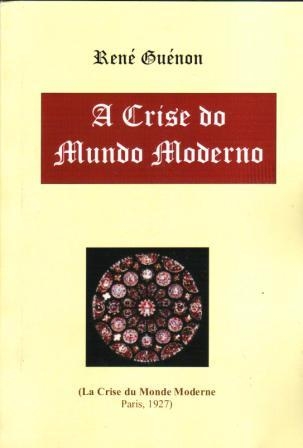 L'IRGET (Institut René Guénon d'études traditionnelles), fondé en 1984 dans la ville de São Paulo par le journaliste Luiz Pontual, se consacre à l'étude et à l'enseignement de l'œuvre de René Guénon, comme l'indique la page d'accueil de cet institut. Il est intéressant de noter que Luiz Pontual est également un admirateur de l'œuvre d’Evola, reconnaissant son opposition tout aussi radicale au monde moderne. Cependant, sur le site de l'IRGET, Pontual déclare : "D'autre part, les partisans d'Evola nous reprochent de ne pas le mettre à niveau ou de le placer au-dessus de Guénon. À ces derniers, nous faisons référence à Evola lui-même, qui a écrit dans ses livres, plus d'une fois, la fierté d'être un Kshatrya (porteur du pouvoir temporel) et reconnaissait en Guénon le figure d’un Brahmane (détenteur de l’autorité spirituelle). Cela nous dispense de toute autre explication". Le journaliste Luiz Pontual montre qu'il ne connaît pas l'œuvre d'Evola en profondeur, car le penseur italien affirme que, dans les temps primordiaux, à l'âge d'or, il n'y avait pas de séparation entre l'autorité spirituelle et le pouvoir temporel. La figure de la royauté sacrée, du roi-prêtre, du pontifex, du divin empereur dans les civilisations traditionnelles, atteste la présence d'une autorité supérieure à la caste des prêtres et à celle des guerriers.
L'IRGET (Institut René Guénon d'études traditionnelles), fondé en 1984 dans la ville de São Paulo par le journaliste Luiz Pontual, se consacre à l'étude et à l'enseignement de l'œuvre de René Guénon, comme l'indique la page d'accueil de cet institut. Il est intéressant de noter que Luiz Pontual est également un admirateur de l'œuvre d’Evola, reconnaissant son opposition tout aussi radicale au monde moderne. Cependant, sur le site de l'IRGET, Pontual déclare : "D'autre part, les partisans d'Evola nous reprochent de ne pas le mettre à niveau ou de le placer au-dessus de Guénon. À ces derniers, nous faisons référence à Evola lui-même, qui a écrit dans ses livres, plus d'une fois, la fierté d'être un Kshatrya (porteur du pouvoir temporel) et reconnaissait en Guénon le figure d’un Brahmane (détenteur de l’autorité spirituelle). Cela nous dispense de toute autre explication". Le journaliste Luiz Pontual montre qu'il ne connaît pas l'œuvre d'Evola en profondeur, car le penseur italien affirme que, dans les temps primordiaux, à l'âge d'or, il n'y avait pas de séparation entre l'autorité spirituelle et le pouvoir temporel. La figure de la royauté sacrée, du roi-prêtre, du pontifex, du divin empereur dans les civilisations traditionnelles, atteste la présence d'une autorité supérieure à la caste des prêtres et à celle des guerriers.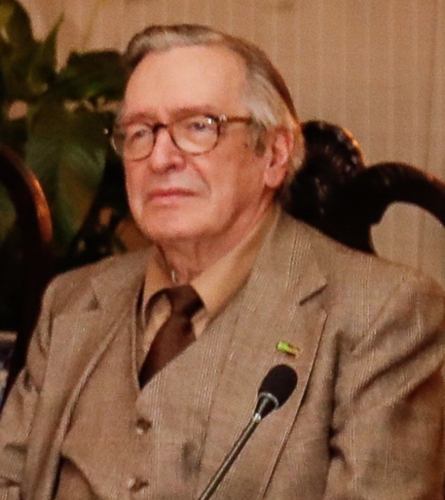
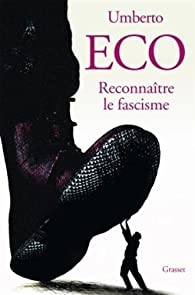 Le 14 mai 1995, le journal Folha de São Paulo, l'un des plus grands journaux du pays, a publié un article de l'écrivain italien Umberto Eco. L'article était intitulé "La nébuleuse fasciste". Le célèbre écrivain italien a tenté d'élaborer un ensemble de traits, de caractéristiques, de ce qu'il a appelé "protofascisme ou fascisme éternel". Parmi les traits énumérés par Eco figure le culte de la tradition, le traditionalisme. À ce propos, il déclare : "Il suffit de jeter un coup d'œil aux parrains de n'importe quel mouvement fasciste pour trouver les grands penseurs traditionalistes. La gnose nazie se nourrissait d'éléments traditionalistes, syncrétiques et occultes. La source théorique la plus importante de la nouvelle droite italienne, Julius Evola, a fusionné le Saint Graal et les Protocoles des Sages de Sion, l'alchimie et le Saint Empire romain-germanique". L'opposition d'Eco à la pensée d'Evola est évidente. L'écrivain italien n'a pas connaissance des critiques de Julius Evola sur le fascisme [2] dans des ouvrages tels que Le fascisme vu de droite et Notes sur le Troisième Reich. Dans ces deux livres, Julius Evola démontre les aspects anti-traditionnels du fascisme italien et du national-socialisme allemand, tels que le culte du chef, le populisme, le nationalisme, le racisme biologique, etc. Quant à la Nouvelle Droite italienne, elle ne se nourrit que de quelques aspects de l'œuvre d'Evola. En tout cas, l'article d'Eco, largement lu par l'intelligentsia brésilienne, ne sert qu'à dénigrer l'image d'Evola et à déformer sa pensée.
Le 14 mai 1995, le journal Folha de São Paulo, l'un des plus grands journaux du pays, a publié un article de l'écrivain italien Umberto Eco. L'article était intitulé "La nébuleuse fasciste". Le célèbre écrivain italien a tenté d'élaborer un ensemble de traits, de caractéristiques, de ce qu'il a appelé "protofascisme ou fascisme éternel". Parmi les traits énumérés par Eco figure le culte de la tradition, le traditionalisme. À ce propos, il déclare : "Il suffit de jeter un coup d'œil aux parrains de n'importe quel mouvement fasciste pour trouver les grands penseurs traditionalistes. La gnose nazie se nourrissait d'éléments traditionalistes, syncrétiques et occultes. La source théorique la plus importante de la nouvelle droite italienne, Julius Evola, a fusionné le Saint Graal et les Protocoles des Sages de Sion, l'alchimie et le Saint Empire romain-germanique". L'opposition d'Eco à la pensée d'Evola est évidente. L'écrivain italien n'a pas connaissance des critiques de Julius Evola sur le fascisme [2] dans des ouvrages tels que Le fascisme vu de droite et Notes sur le Troisième Reich. Dans ces deux livres, Julius Evola démontre les aspects anti-traditionnels du fascisme italien et du national-socialisme allemand, tels que le culte du chef, le populisme, le nationalisme, le racisme biologique, etc. Quant à la Nouvelle Droite italienne, elle ne se nourrit que de quelques aspects de l'œuvre d'Evola. En tout cas, l'article d'Eco, largement lu par l'intelligentsia brésilienne, ne sert qu'à dénigrer l'image d'Evola et à déformer sa pensée.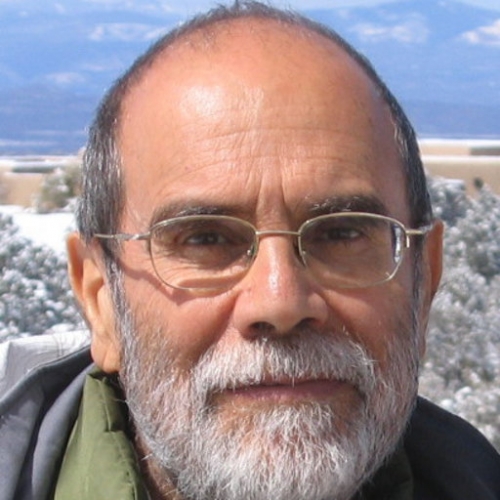


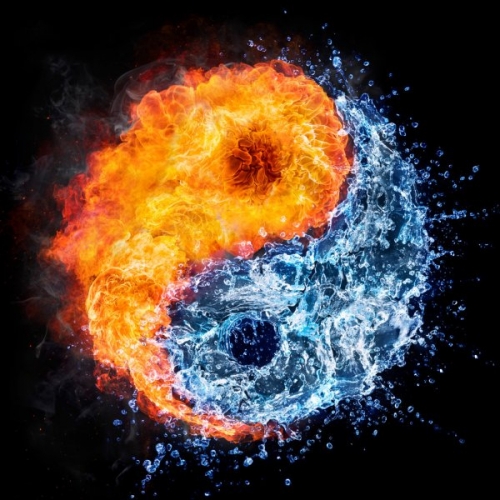
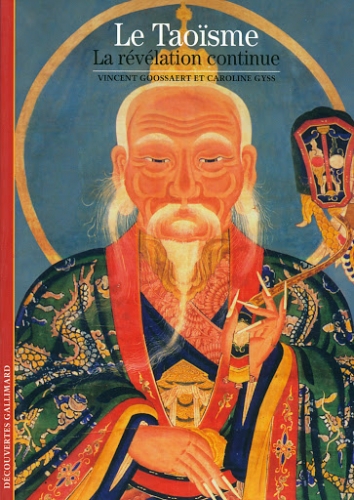
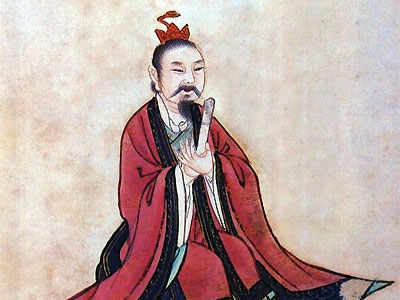
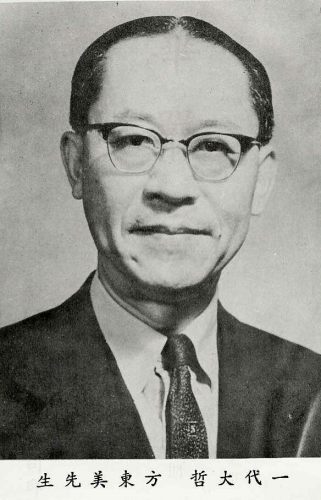


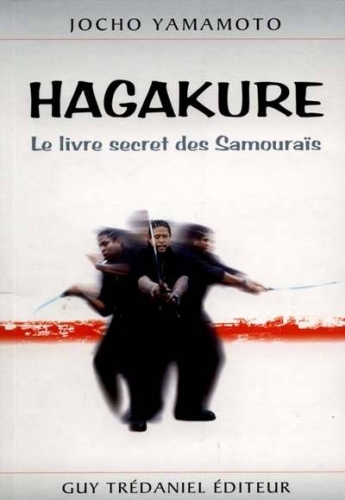 Le maître ajoute :
Le maître ajoute :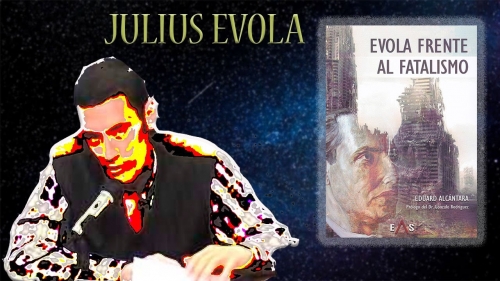
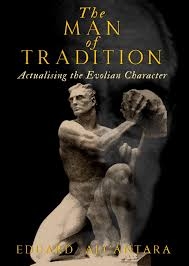 R : Le livre vise à montrer la caractérisation archétypale de ce que serait un Homme de Tradition, y compris - donc - les objectifs qu'il devrait s'efforcer d'atteindre, afin de servir de modèle à tous ceux de nos semblables qui aspirent à s'élever au-dessus de la médiocrité de l'homme moderne (et, plus encore, post-moderne), médiocrité qui est hégémonique en nos temps de dissolution. En gardant toujours à l'esprit quels sont les traits essentiels qui définissent l'Homme de Tradition, il sera possible d'aspirer, petit à petit, à se forger intérieurement ; avoir ce modèle comme miroir dans lequel se regarder (et qui sait s'il ne sera pas possible d'aspirer à ne pas écarter la possibilité d'opérer un renouvellement ontologique intérieur). La difficulté ou l'impossibilité de trouver, de nos jours, quelque maillon des chaînes initiatiques qui nous relient à la Sagesse de la Tradition Primordiale nous amène à donner une valeur particulière à ce qu'Evola appelle la "voie autonome de réalisation". Le contenu de ce livre peut peut-être aider dans une certaine mesure à faire en sorte que ce chemin ne soit pas une chimère.
R : Le livre vise à montrer la caractérisation archétypale de ce que serait un Homme de Tradition, y compris - donc - les objectifs qu'il devrait s'efforcer d'atteindre, afin de servir de modèle à tous ceux de nos semblables qui aspirent à s'élever au-dessus de la médiocrité de l'homme moderne (et, plus encore, post-moderne), médiocrité qui est hégémonique en nos temps de dissolution. En gardant toujours à l'esprit quels sont les traits essentiels qui définissent l'Homme de Tradition, il sera possible d'aspirer, petit à petit, à se forger intérieurement ; avoir ce modèle comme miroir dans lequel se regarder (et qui sait s'il ne sera pas possible d'aspirer à ne pas écarter la possibilité d'opérer un renouvellement ontologique intérieur). La difficulté ou l'impossibilité de trouver, de nos jours, quelque maillon des chaînes initiatiques qui nous relient à la Sagesse de la Tradition Primordiale nous amène à donner une valeur particulière à ce qu'Evola appelle la "voie autonome de réalisation". Le contenu de ce livre peut peut-être aider dans une certaine mesure à faire en sorte que ce chemin ne soit pas une chimère.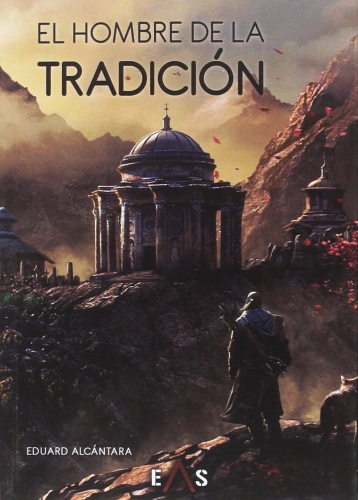
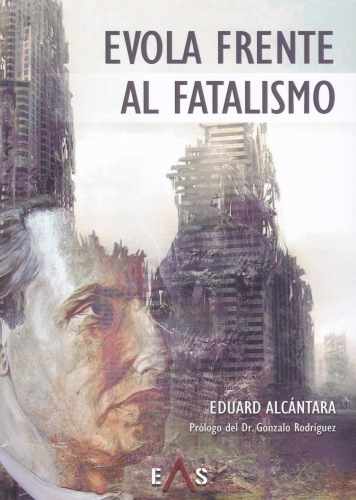

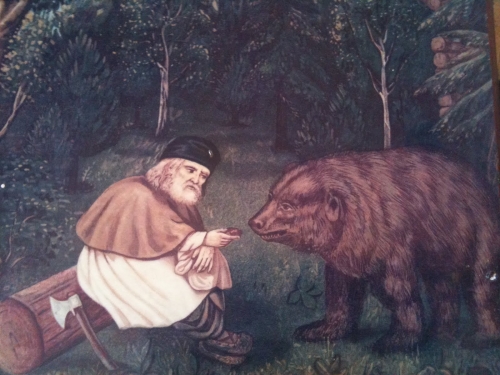
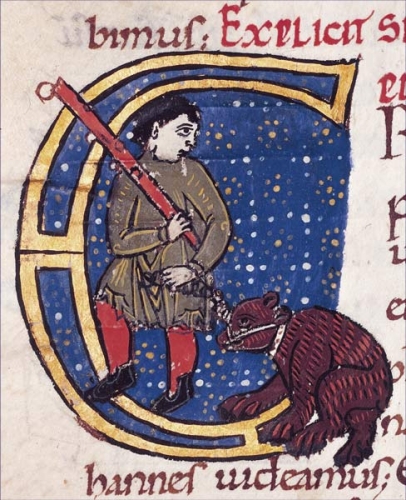

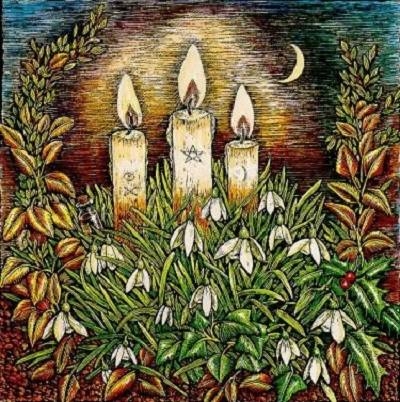
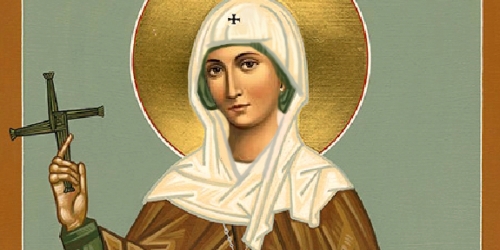




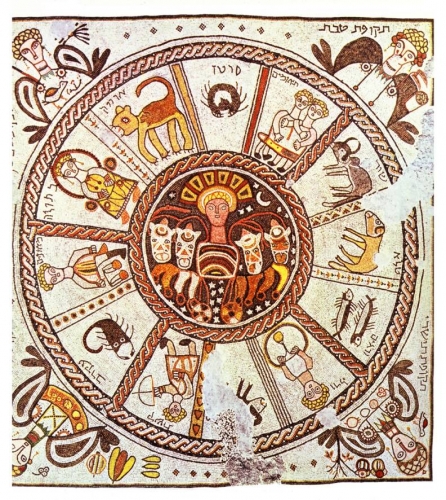
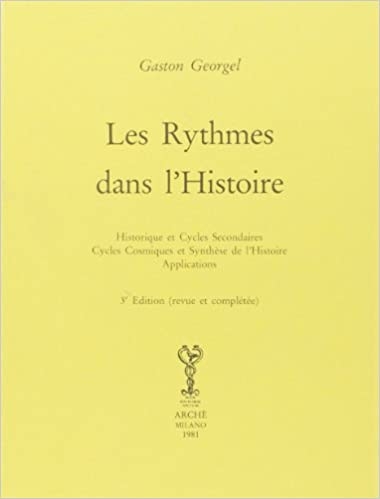 « On peut se demander si les migrations successives des foyers de civilisation ne sont pas réglées, elles aussi, par des lois mathématiques. Les foyers de civilisation se sont déplacés de l’Est vers l’Ouest, par exemple d’Our en Chaldée et Athènes à Paris. Ces trois villes se trouvent sur le même arc de cercle et les distances Our-Athènes et Athènes-Paris sont sensiblement égales de même que leurs apogées successives sont séparées par le même laps de temps de vingt et un siècles et demi environ [= la précession des équinoxes]. Ceci nous conduit à supposer que le déplacement du point vernal, parcourant les signes du Zodiaque en vingt et un siècle et demi, régit en même temps que les rythmes de civilisation, leurs déplacements successifs à la surface du globe. »
« On peut se demander si les migrations successives des foyers de civilisation ne sont pas réglées, elles aussi, par des lois mathématiques. Les foyers de civilisation se sont déplacés de l’Est vers l’Ouest, par exemple d’Our en Chaldée et Athènes à Paris. Ces trois villes se trouvent sur le même arc de cercle et les distances Our-Athènes et Athènes-Paris sont sensiblement égales de même que leurs apogées successives sont séparées par le même laps de temps de vingt et un siècles et demi environ [= la précession des équinoxes]. Ceci nous conduit à supposer que le déplacement du point vernal, parcourant les signes du Zodiaque en vingt et un siècle et demi, régit en même temps que les rythmes de civilisation, leurs déplacements successifs à la surface du globe. »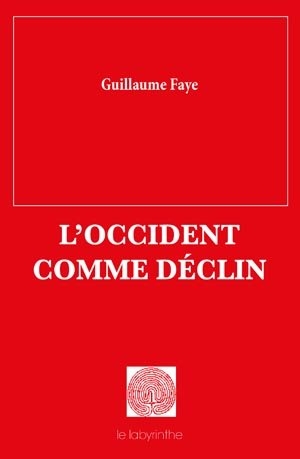 « La vieille tradition se trompe : l’Occident n’est plus européen, et l’Europe n’est plus l’Occident. Dans sa marche vers l’ouest, le soleil de notre civilisation s’est terni. Parti d’Hellade, investissant l’Italie, puis l’Europe occidentale, puis l’Angleterre, et enfin, ayant traversé les mers, s’étant installé en Amérique, le centre de l’‘Occident’ s’est lentement défiguré. Aujourd’hui, comme le comprit Raymond Abellio, c’est la Californie qui s’est instaurée comme épicentre et comme essence de l’Occident. (…) L’Occident alors, dans un mouvement planétaire qui est d’ailleurs déjà commencé, continuera sa marche vers l’Ouest en installant son centre là où il se prépare déjà, dans l’extrême-est, dans les archipels de l’Océan Pacifique, du coté du Japon et des Indes orientales… C’est la réversion absolue du mouvement de traversée des mers parti d’Europe au XVIe siècle… »
« La vieille tradition se trompe : l’Occident n’est plus européen, et l’Europe n’est plus l’Occident. Dans sa marche vers l’ouest, le soleil de notre civilisation s’est terni. Parti d’Hellade, investissant l’Italie, puis l’Europe occidentale, puis l’Angleterre, et enfin, ayant traversé les mers, s’étant installé en Amérique, le centre de l’‘Occident’ s’est lentement défiguré. Aujourd’hui, comme le comprit Raymond Abellio, c’est la Californie qui s’est instaurée comme épicentre et comme essence de l’Occident. (…) L’Occident alors, dans un mouvement planétaire qui est d’ailleurs déjà commencé, continuera sa marche vers l’Ouest en installant son centre là où il se prépare déjà, dans l’extrême-est, dans les archipels de l’Océan Pacifique, du coté du Japon et des Indes orientales… C’est la réversion absolue du mouvement de traversée des mers parti d’Europe au XVIe siècle… »